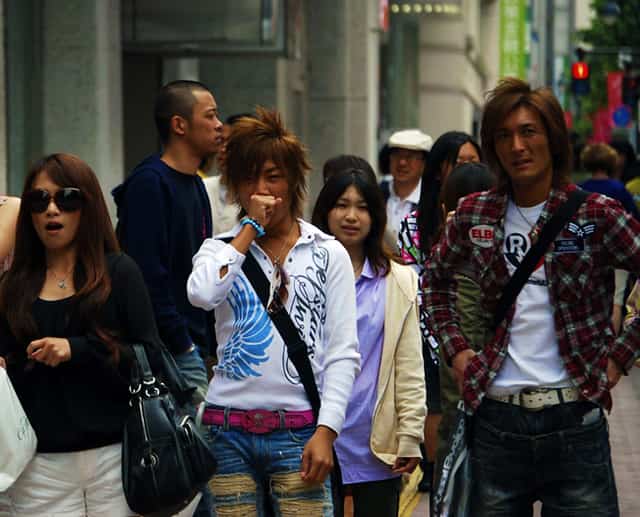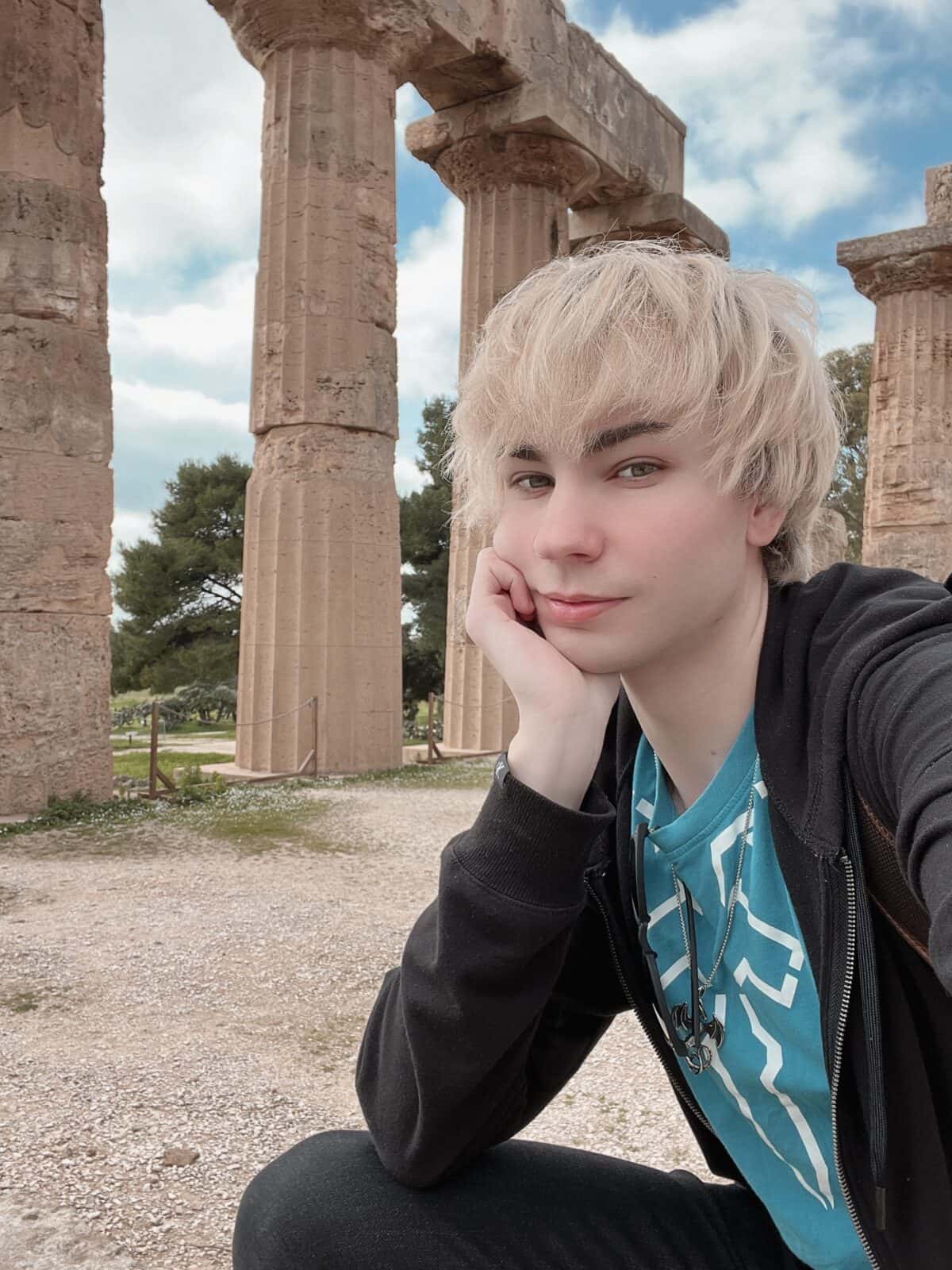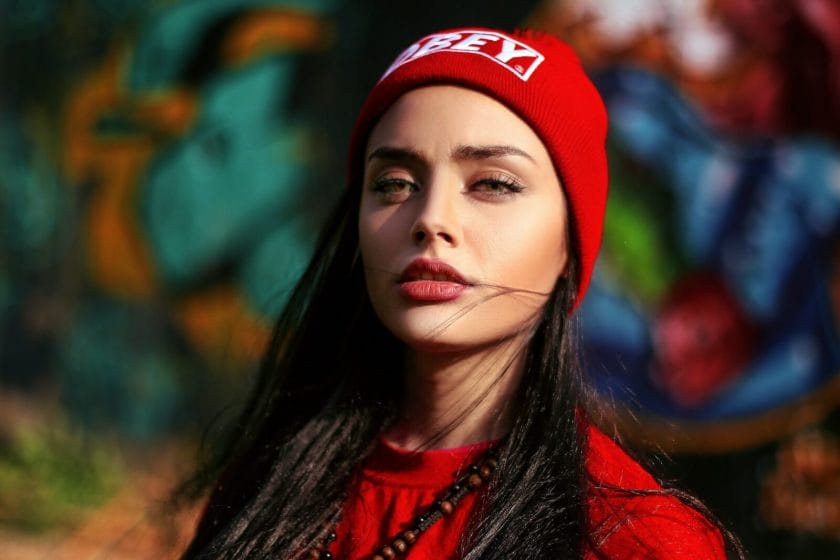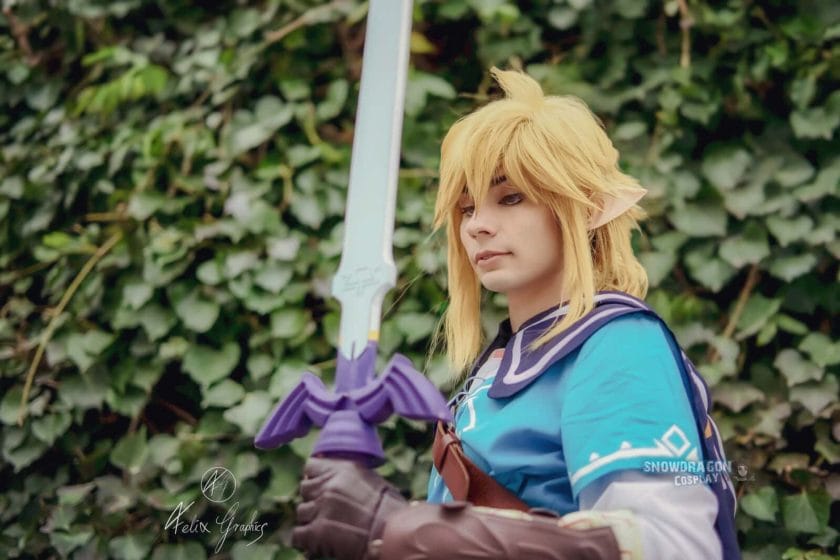Author
-

German Cosplayer from Nürnberg, professional Model & Walkingact for events & content creator.

Evolution of Japanese Street Fashion: From Traditional to Trendsetting
Japanese street fashion has come a long way from its traditional roots, evolving into a global trendsetting phenomenon. The unique blend of traditional Japanese garments with modern and Western influences has created a style that is both distinct and innovative. This evolution can be traced back to the post-World War II era when Japan experienced rapid economic growth and cultural exchange with the West.
One key aspect of this evolution is the influence of youth subcultures on Japanese street fashion. These subcultures, such as the rebellious Bosozoku motorcycle gangs or the punk-inspired Harajuku style, have played a significant role in shaping the fashion landscape. They introduced new elements like bold colors, unconventional silhouettes, and avant-garde accessories that challenged societal norms and pushed boundaries.
The Influence of Western Fashion
Another factor in the evolution of Japanese street fashion is the influence of Western fashion trends. In the 1980s and 1990s, there was a surge in popularity for American brands like Levi’s and Nike, which led to an increased interest in casual streetwear styles. This laid the foundation for contemporary Japanese street fashion, which often incorporates elements of Western urban fashion.
Key Elements of Japanese Street Fashion
- Mixing traditional and modern elements
- Bold colors and patterns
- Layering and oversized silhouettes
- Incorporation of unique accessories
Overall, the evolution of Japanese street fashion showcases how traditional aesthetics can be reinterpreted and transformed into something entirely new. It is a testament to Japan’s ability to embrace change while still maintaining a strong connection to its cultural heritage.
Exploring Popular Subcultures within Japanese Street Fashion
Gyaru Style
Gyaru style is a popular subculture within Japanese street fashion that emerged in the 1990s. This style is characterized by its glamorous and flashy aesthetic, with a focus on exaggerated makeup, tanned skin, and big hair. Gyaru fashionistas often wear colorful and trendy clothing, such as short skirts, crop tops, platform shoes, and accessories like large bows or statement jewelry. The gyaru subculture also emphasizes socializing and belonging to a group, with many gyaru girls forming close-knit communities.
Key Features of Gyaru Style:
- Tanned skin: Gyaru girls often use tanning beds or self-tanners to achieve a dark complexion.
- Big hair: Volume is key in gyaru hairstyles, with teased or curled hair being common.
- Dramatic makeup: Thick eyeliner, false lashes, and bright-colored eyeshadows are typical in gyaru makeup looks.
- Trendy clothing: Gyaru fashion embraces the latest trends, with an emphasis on feminine and cute styles.
Gyaru style has evolved over time and has various subcategories within it, such as Himegyaru (princess-like gyarus) or Ganguro (a more extreme version characterized by heavily tanned skin and white makeup). Despite facing criticism for its unconventional appearance, gyaru style continues to be influential in Japanese street fashion and has even gained international recognition.
Visual Kei
Visual Kei is another prominent subculture that emerged in the 1980s within the Japanese music scene. It is characterized by its flamboyant and theatrical style, drawing inspiration from various sources such as glam rock, goth, and punk. Visual Kei fashion revolves around creating an androgynous or gender-bending look, with musicians often being the main influencers of this subculture.
Key Features of Visual Kei Style:
- Elaborate hairstyles: Visual Kei artists often sport extravagant and gravity-defying hairstyles, using a combination of wigs, extensions, and styling products.
- Dramatic makeup: Heavy eyeliner, colorful eyeshadows, and bold lip colors are common in visual kei makeup looks.
- Layered clothing: Visual Kei fashion embraces a mix of different textures, patterns, and styles to create a unique and eye-catching ensemble.
- Accessories: Accessories play a crucial role in visual kei fashion, with items like chokers, chains, gloves, and platform boots being popular choices.
The visual kei subculture not only influences fashion but also music and performance art. Bands like X Japan and Dir En Grey have gained significant international recognition for their unique visual kei style. Despite its niche appeal, visual kei continues to inspire alternative fashion enthusiasts worldwide.
The Influence of Harajuku: Shaping Japanese Street Fashion
Harajuku, a neighborhood in Tokyo, has played a significant role in shaping Japanese street fashion. Known for its vibrant and eclectic style, Harajuku is a hub for creativity and self-expression. The area attracts both locals and tourists who are drawn to its unique fashion scene. Harajuku fashion is characterized by a mix of different styles, including punk, gothic, Lolita, and kawaii (cute) fashion.
One of the key factors contributing to the influence of Harajuku on Japanese street fashion is the presence of various subcultures within the neighborhood. These subcultures, such as the visual kei movement or the cosplay community, have their own distinct style and aesthetic. They often serve as sources of inspiration for mainstream fashion trends.
The Visual Kei Movement
The visual kei movement emerged in Japan during the 1980s and is characterized by elaborate costumes, dramatic makeup, and flamboyant hairstyles. Bands like X Japan and Luna Sea popularized this style which eventually influenced street fashion in Harajuku. Many young people adopted elements of visual kei into their everyday outfits, creating a fusion of music and fashion.
Cosplay Culture
Cosplay, short for costume play, involves dressing up as characters from anime, manga, video games, or other forms of media. Cosplayers often gather in Harajuku to showcase their intricate costumes and participate in events such as Comic Market or AnimeJapan. The creativity displayed in cosplay has had a significant impact on Japanese street fashion by encouraging individuals to experiment with different styles and incorporate elements from fictional characters into their outfits.
Fusion of Tradition and Modernity: Traditional Elements in Contemporary Japanese Street Fashion
Japanese street fashion has a unique ability to blend traditional elements with modern trends, creating a distinct and captivating style. Traditional Japanese clothing, such as kimono or yukata, have been reimagined and incorporated into contemporary fashion.
Kimono-Inspired Fashion
Kimono-inspired garments have become popular in Japanese street fashion. Designers often incorporate the loose silhouette, wide sleeves, and intricate patterns of the kimono into modern clothing items like dresses or tops. This fusion of traditional and modern aesthetics allows individuals to embrace their cultural heritage while still being fashionable.
Obi Belts
The obi belt is another traditional element that has made its way into contemporary Japanese street fashion. Originally worn with kimono to secure the garment, obi belts are now used as stylish accessories that can be paired with dresses or oversized shirts. The elaborate designs and vibrant colors of obi belts add a touch of elegance and uniqueness to any outfit.
Lists:
- Kimono-inspired dresses
- Tops with wide sleeves
- Obi belts as accessories
- Traditional patterns on modern clothing
Iconic Trends that Originated from Japanese Street Style
Japanese street style has had a significant impact on global fashion trends, with several iconic trends originating from Japan. These trends often reflect the creativity and individuality found in Japanese street fashion.
Harajuku Fashion
Harajuku fashion, as mentioned earlier, is known for its vibrant and eclectic style. The colorful mix of different subcultures and styles has inspired designers around the world. Elements such as layering, bold prints, and playful accessories have become popular trends in the global fashion industry.
Decora Style
Decora style is a subcategory of Harajuku fashion that focuses on excessive accessorizing and bright colors. The trend involves wearing multiple hair clips, colorful bracelets, and oversized bows. Decora style has influenced the concept of “statement accessories” in fashion, encouraging individuals to embrace bold and eye-catching pieces.
Lists:
- Layering
- Bold prints
- Playful accessories
- Excessive accessorizing
- Bright colors
- Statement accessories
Gender Dynamics in Japanese Street Fashion: Breaking Stereotypes
Japanese street fashion challenges traditional gender norms by providing a platform for individuals to express themselves regardless of societal expectations. This inclusivity has led to the emergence of unique styles that break stereotypes.
Gyaru Fashion
Gyaru fashion is a style predominantly embraced by young women. It is characterized by its glamorous and feminine aesthetic, often featuring tanned skin, dramatic makeup, and trendy clothing. Gyaru fashion challenges the notion that women should conform to conventional standards of beauty and encourages self-expression without limitations.
Otokonoko Style
Otokonoko style refers to men who dress in feminine attire. This style challenges traditional gender roles by blurring the lines between masculinity and femininity. Otokonoko individuals often wear skirts, dresses, or other traditionally female clothing items while incorporating elements from various subcultures such as punk or gothic fashion.
List:
- Glamorous and feminine aesthetic
- Tanned skin
- Dramatic makeup
- Trendy clothing
- Blurring gender lines
- Incorporating elements from subcultures
Social Media’s Impact on the Global Popularity of Japanese Street Fashion
Social media platforms have played a significant role in popularizing Japanese street fashion worldwide. Platforms such as Instagram, YouTube, and TikTok have allowed individuals to showcase their unique styles and connect with like-minded fashion enthusiasts from around the globe.
Street Style Influencers
Japanese street style influencers have gained a substantial following on social media platforms, where they share their daily outfits and provide fashion inspiration. Their content often features detailed descriptions of each item worn, allowing followers to easily replicate the looks or find similar pieces.
Hashtag Culture
The use of hashtags has helped create communities centered around Japanese street fashion. Hashtags such as #HarajukuFashion or #TokyoStreetStyle allow users to discover new trends, connect with others who share similar interests, and stay updated on the latest fashion events happening in Japan.
List:
- Street style influencers
- Detailed outfit descriptions
- Fashion inspiration
- Hashtag communities
- Discovering new trends through hashtags
- Connecting with like-minded individuals through social media platforms
Lolita Fashion in Japan: Key Characteristics and Cultural Significance
Lolita fashion is a prominent subculture within Japanese street fashion that draws inspiration from Victorian-era clothing. It is characterized by its doll-like aesthetic, emphasizing modesty and femininity.
Key Characteristics of Lolita Fashion
Lolita fashion typically involves wearing dresses or skirts with petticoats for added volume. The style often incorporates lace, ruffles, and bows as decorative elements. Accessories such as bonnets, knee-high socks, and Mary Jane shoes are commonly worn to complete the look.
Cultural Significance of Lolita Fashion
Lolita fashion is more than just a style; it represents a form of self-expression and escapism for many individuals. By embracing the innocence and elegance associated with Victorian-era fashion, Lolita enthusiasts create a world that contrasts with the fast-paced modern society. The subculture also promotes a sense of community through meetups, tea parties, and events where like-minded individuals can gather and celebrate their shared passion for this unique fashion style.
List:
- Dresses or skirts with petticoats
- Lace, ruffles, and bows
- Bonnets
- Knee-high socks
- Mary Jane shoes
- Escapism from modern society
- Sense of community through meetups and events
The “Kawaii” Factor: How Cuteness Shapes Japanese Street Fashion
The concept of “kawaii,” meaning cute or adorable in Japanese, has had a profound influence on Japanese street fashion. The emphasis on cuteness can be seen in various styles such as Harajuku fashion or Lolita fashion.
Kawaii Elements in Harajuku Fashion
Harajuku fashion often incorporates kawaii elements through the use of pastel colors, oversized bows, and whimsical prints. The aim is to create an innocent and childlike appearance that exudes charm and playfulness.
Kawaii Aesthetic in Lolita Fashion
Lolita fashion embraces the kawaii aesthetic by emphasizing cute and feminine details such as frills, lace, and doll-like accessories. The goal is to create a look that resembles a living doll, embodying the essence of cuteness.
List:
- Pastel colors
- Oversized bows
- Whimsical prints
- Frills and lace
- Doll-like accessories
- Innocent and childlike appearance
- Charm and playfulness
Notable Designers and Brands Associated with Japanese Street Fashion
Japanese street fashion has produced numerous talented designers and brands that have gained recognition both domestically and internationally. These designers have made significant contributions to the evolution of Japanese street style.
Yohji Yamamoto
Yohji Yamamoto is a renowned Japanese fashion designer known for his avant-garde designs. His brand, Yohji Yamamoto, combines traditional Japanese aesthetics with modern elements, creating unique silhouettes and draping techniques that challenge conventional notions of beauty.
Takashi Murakami
Takashi Murakami is a contemporary artist who has collaborated with various fashion brands to create distinctive streetwear collections. His vibrant artwork often features playful motifs inspired by anime, manga, and traditional Japanese art.
List:
- Yohji Yamamoto
- Takashi Murakami
- Avant-garde designs
- Unique silhouettes and draping techniques
- Playful motifs inspired by anime and manga
- Collaborations with fashion brands
Dolly Kei: Unveiling the Concept and Significance in Japanese Street Style
Dolly Kei is a subculture within Japanese street fashion that draws inspiration from European historical clothing, particularly the styles of the Victorian and Edwardian eras. It embraces a vintage aesthetic with a dark and mystical twist.
Key Characteristics of Dolly Kei Fashion
Dolly Kei fashion often involves layering various vintage garments such as lace blouses, long skirts, and oversized coats. The color palette tends to be earthy and muted, with a preference for browns, greens, and deep reds. Accessories like antique brooches, pocket watches, or wide-brimmed hats are commonly used to complete the look.
The Significance of Dolly Kei in Japanese Street Style
Dolly Kei represents a departure from mainstream trends by embracing nostalgia and storytelling through fashion. It allows individuals to express their love for history while incorporating personal touches into their outfits. Dolly Kei enthusiasts often find inspiration in folklore, fairy tales, or nature, creating an enchanting style that stands out in the world of Japanese street fashion.
List:
- Vintage layering
- Lace blouses
- Long skirts
- Oversized coats
- Earthy and muted color palette
- Antique brooches
- Pocket watches
- Wide-brimmed hats
- Nostalgia and storytelling through fashion
- Inspiration from folklore, fairy tales, or nature
Vintage Vibes: The Role of Vintage Clothing in Japanese Street Fashion
Vintage clothing plays a significant role in Japanese street fashion, with many individuals incorporating vintage pieces into their outfits to create unique and personalized looks.
The Appeal of Vintage Clothing
Vintage clothing offers a sense of nostalgia and individuality that is often lacking in mass-produced fashion. It allows individuals to stand out from the crowd by wearing one-of-a-kind pieces with a history behind them.
Styling Vintage Clothing in Japanese Street Fashion
In Japanese street fashion, vintage clothing is often mixed with modern pieces to create a balanced and eclectic look. Pairing a vintage blouse with contemporary jeans or accessorizing a modern dress with vintage jewelry are common styling techniques that add depth and character to an outfit.
List:
- Sense of nostalgia and individuality
- One-of-a-kind pieces with history
- Mixing vintage clothing with modern pieces for an eclectic look
- Pairing
Accessorizing the Look: Must-Have Accessories for a Japanese Street Style Ensemble
Statement Bags
One essential accessory for completing a Japanese street style ensemble is a statement bag. These bags often feature unique shapes, vibrant colors, and eye-catching patterns that add an element of playfulness to any outfit. Popular choices include backpacks adorned with anime characters or quirky animal-shaped crossbody bags. Statement bags not only serve as functional accessories to carry daily essentials but also act as a bold fashion statement that showcases individuality.
Chunky Sneakers
No Japanese street style look is complete without a pair of chunky sneakers. These shoes have become synonymous with the fashion subculture and are known for their exaggerated, bulky appearance. Chunky sneakers come in various colors and designs, from neon hues to futuristic metallic finishes. They provide both comfort and style, effortlessly elevating any outfit with their edgy aesthetic.
The Melody of Style: Music’s Influence on Japanese Street Fashion Subcultures
J-Pop and Kawaii Fashion
J-Pop, short for Japanese Pop music, has had a significant influence on the development of street fashion subcultures in Japan. One prominent example is the Kawaii fashion movement, characterized by its cute and childlike aesthetic. Inspired by J-Pop idols who often adopt this style, Kawaii fashion incorporates pastel colors, frilly dresses, oversized bows, and adorable accessories like plush toys or Hello Kitty-themed items. This fusion of music and fashion creates a harmonious blend that reflects the playful and youthful spirit of Japanese street fashion.
Visual Kei and Gothic Lolita Fashion
Another musical genre that has shaped Japanese street fashion is Visual Kei. Known for its flamboyant and theatrical style, Visual Kei has given rise to the Gothic Lolita fashion subculture. This subculture combines elements of Victorian-era clothing with a dark and gothic twist. Women often wear elaborate dresses with lace, ruffles, and corsets, paired with platform boots or Mary Jane shoes. The fusion of Visual Kei’s dramatic music and Gothic Lolita’s intricate fashion creates a unique and captivating style that stands out in Japanese street fashion.
The Globalization Paradox: Balancing Authenticity and Uniqueness in Japanese Street Fashion
Traditional Japanese Elements
When it comes to balancing authenticity and uniqueness in Japanese street fashion, incorporating traditional Japanese elements is crucial. Designers often draw inspiration from traditional garments such as kimono or yukata, integrating their silhouettes or patterns into modern clothing pieces. This fusion of old and new creates a distinct style that pays homage to Japan’s rich cultural heritage while maintaining a contemporary edge.
Fusion with Western Influences
To stay relevant in the global fashion scene, Japanese street fashion also embraces influences from Western cultures. This fusion results in unique styles that blend traditional Japanese aesthetics with contemporary Western trends. For example, mixing kimono-inspired tops with denim jeans or pairing kawaii accessories with leather jackets showcases the ability to balance authenticity while incorporating global influences.
In conclusion, Japanese street fashion is a vibrant and ever-evolving style trend that showcases creativity and individuality. From Harajuku’s eclectic mix to the sleek and minimalist looks of Shibuya, there is something for everyone in this fashion scene. If you’re inspired by the unique fashion culture of Japan and want to take it a step further, why not explore our cosplay services? We offer an exciting range of costumes and accessories to help you bring your favorite characters to life. So go ahead, unleash your inner cosplayer and let your imagination run wild!

Author
-

German Cosplayer from Nürnberg, professional Model & Walkingact for events & content creator.
-






